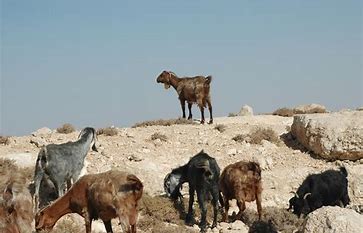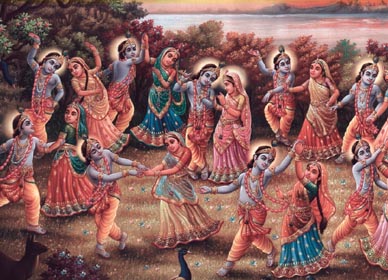
There are many proofs from Hindu culture that denote the existence of animal sacrifice for gods and goddesses.
In this article, we will study and present the issue of slaughtering, sacrificing, and eating meat in Hinduism and Islam. It is known that some meat is halal in Islam, such as camels, cows, sheep, chickens, fish and some are forbidden such as elephant, pig, predators with fangs and birds that hunt with claws. Slaughtering the sacrifice is obligatory on every Muslim, able, residing not on a journey, every year during the days of Eid al-Adha.
Because of slaughtering cows or eating beef, many Muslims have lost their lives at the hands of Hindu terrorists during these years. And the issue of cow slaughter has been a major religious, social and political issue in India for centuries.
Hinduism is one the most ancient religion in the world. According Islamic tradition; the first human being; Hazrat Adam (peace be upon him) descended in India. (1)
Human Dietary Habit in Ancient Times
It is certain that humans used to live on different types of primitive foods. It is logical to assume that their main food was not fruit, flower and plants only. The use of non-vegetarian food was also amongst the favorite foods of human being like some animal’s habit. Animal meat is something normal amongst human being, even, man ate human flesh in some cases.
Rājendralāla Mitra (Raja) says in his book: On Human Sacrifices in Ancient India:
“It cannot be denied, that men under certain circumstances of society, do take to human flesh as an article of food.”(2)
It is an ancient tradition to thank God for food before meals. Sacrifice is a part of that old system to offer some part of food on the name of food; if was offered, it will represent a form of thank to Him and will destroy food’s side effects.
Therefore, preferring some food to some and prohibition of meat is surely a later development in Indian culture. This is a logical conclusion in this matter.
The Native Indians
The native Indians, Dravidians, Santhal, adivasis have always been carnivores even today, while Brahmin and Aryans are invaders of India who drive away the original Indian people to the mountains and jungles and they occupied their land or chained them in caste system.(3)
Meat Eating in India
Even, Hindu religion has never been supporter of non-violence or killing the animal for the food, but was influenced by Jainism and Buddhism in later periods, and incorporated some of their conduct, thought and philosophy. The main reason for this is to accept Mahatma Buddha as the incarnation of Lord Vishnu and in particular the approval and promotion of his teachings of the Vaishnava sect of Hinduism.
Is Animal Sacrifice Permissible in Hinduism?
The question is: Is animal sacrifice permissible in Hinduism? In some Hindu communities, sacrifice is used to please the gods and deities. The practice of sacrificing goat, rooster or buffalo under the sacrificial practice is common amongst Hindus. The question arises whether sacrificial practice is a part of Hinduism?
However, some Hindu writers claim that Hinduism in its essence does not have any concept of animal killing for food.
बलि Bali or Sacrifice in Sanskrit Dictionary
The Sanskrit dictionary mentions under the word Bali some animals that denote the existence of animal sacrifice amongst at least some Indians.
The dictionary mentions the following:
बलि tribute, offering, gift, oblation (esp. an offering of portions of food, such as grain, rice, etc. to certain gods, semi-divine beings, household divinities, spirits, men, birds, other animals and all creatures including even lifeless objects; it is made before the daily meal by arranging portions of food in a circle or by throwing them into the air outside the house or into the sacred fire; it is also called bhuta-yajna and was one of the 5 mahd-yajnas or great devotional acts; a victim (often a goat or buffalo) offered to Durga, the presentation of an offering to a deity (consisting of rice, milk, fruits etc. when presented to Vishnu, or of living victims when offered to Siva or Durga. (4)
We note in the above-mentioned reference animals, birds, buffalo and goat beside some grains, that means that the animal sacrifices existed in Indian and Hindu society.
Furthermore, there is another word in Sanskrit that is Yajna यज्ञ which has the meaning of animal sacrifice. The Dictionary mentions:
“Yajna: worship, devotion, prayer, praise; act of worship or devotion, offering, oblation, sacrifice (the former meanings prevailing in Veda, the latter in post-Vedic literature. (5)
Moreover, there is an altar or special place in front of some Hindu temples in India to slaughter sacrificial animal such as sheep and goat. And when they slaughter they separate the head from the body completely, however, Muslims do not separate the head from the body when they slaughter the animal and wisdom is that the animal should not be given pain more than need.
Moreover some Hindu scriptures mention the age of the animal when it should be sacrificed:
“An animal is fit for being sacrificed when it is more than ten days old.” It is not fit until it has teeth.” It is not fit until the milk teeth are shed.”(6)
Conclusion:
With all these evidence, some Hindu brothers claim that the slaughter of sacrifice is incompatible with mercy and animal should not be harmed, and surprisingly, they claim mercy with the animal while they do not have any mercy on weak human being when they catch a helpless person and attack him collectively and kill him beating and torturing and spread fear and panic in the hearts of people. Even, they know that mighty tyrants like Pharaoh and Haman and their ilk are under the dust now and being tortured by the angels for their tyrannies and the same will happen with every tyrant.
_____________________
(1)See: Subhatul Murjan Fi Aasar e hundustan, by Sayyid Ghulam Ali Azad Al-Belgirami, p.5.
(2) (On Human Sacrifices in Ancient India By Rājendralāla Mitra (Raja), p.87)
(3)Hindustani Tamaddun: Steam Press, Hyderabad, Deccan 1943, p.10.
)هندوستاني تمدن ص 10 ط:استيم بريس ، حيدرآباد ، الدكن ، الهند 1943م(.
(4) A Sanskrit -English Dictionary, by Sir Monier Monier-Williams, Oxford University Press, Amen house, London. 1956, 1960, P. 723.
(5) A Sanskrit -English Dictionary, by Sir Monier Monier-Williams, Oxford University Press, Amen house, London. 1956, 1960, P. 839. (See under the word यज्ञ).
(6) On Human Sacrifices in Ancient India By Rājendralāla Mitra (Raja) P.92.
[opic_orginalurl]


